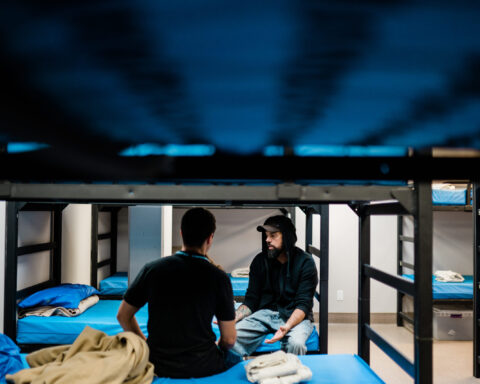As many as 1,200 boat people drowned attempting to cross the Mediterranean Sea headed for Europe during a 10-day period last April. The drownings drew media attention to a growing and cyclical phenomenon: the arrival in Europe of large numbers of migrants and refugees, particularly by sea. Over 225,000 have crossed the Mediterranean so far this year, mostly bound for Greece and Italy, severely stretching their resources; 2,100 have drowned.
Migrant boats have a way of focusing public attention that other means of migration do not. Arrivals by land and air are far more numerous, yet it is boat arrivals that arouse the interest of the media and the public. This includes Canada. Boat arrivals have resulted in some of the most negative public comments about the Canadian government’s management of immigration. The arrival of a boat filled with Tamils in 1986 and another boat with Sikhs a year later led to an emergency recall of Parliament. The four boats with Chinese migrants in 1999 and the boat with Tamils in 2009 kept immigration in the spotlight for months.
The number of persons claiming refugee status in Europe this year is likely to exceed the previous high of 672,000 in 1992. In the first quarter of of 2015, there were 185,000 claims made, an increase of 86 per cent over the previous year’s first quarter.
Global trend
These numbers reflect what is happening globally. In 2014, there were a record 51.2 million people displaced from their homes. Most — 26 million — were displaced in their own countries, while 13 million were refugees outside their country. An increasing number find their way to wealthy countries to make refugee claims. The unrest in the Middle East and North Africa and the poverty of sub-Saharan Africa do not suggest any diminishing of the numbers seeking a better life in Europe.
A plea for burden-sharing by Italy and Greece for help from other European Union members has been largely unsuccessful.
Europe’s continuing dilemma is that it is impossible to keep everyone out and impossible to let everyone in. The rather paradoxical compromise, apparent in various degrees in all Western countries, is one that takes steps to keep migrants out, but for those who manage to get in, have a legal process that allows persons found to be refugees to remain in the country. However, governments generally want to make sure that this acceptance does not become a “pull” factor for other migrants. Changes to this compromise are most likely to be in the direction of greater enforcement and control as the European public becomes increasingly concerned about integration, multiculturalism and terrorism.
Europe’s continuing dilemma is that it is impossible to keep everyone out and impossible to let everyone in.
The Australian model
There are other options being advanced, but not specifically by the EU. One option advanced by pro-immigration groups is for Europe to open its borders to legal migration in the way that Canada, the United States and Australia do. In this way, it is argued, Europe will absorb the migratory pressures it faces in a legal manner and avoid the negative consequences, such as drownings at sea, of irregular migration and compensate for the continent’s low birth rate. The problem with this approach is that that there is no balance between what European countries can (even where they willing to do so) absorb and the demand for migration, a demand far greater than the total of displaced persons. Just in Libya, there are reported to be a million people waiting to enter Europe.
A very different option is the so-called Pacific Solution followed by Australia. It is frowned upon by the United Nations High Commissioner for Refugees and pro-immigration groups. Its focus is the elimination of boat arrivals by moving the examination of asylum claims from onshore to third countries. It has been advanced by the United Kingdom, Germany, the Netherlands and Denmark individually, but not by the EU as a whole. Australia processes the claims of persons intercepted on boats in Papua New Guinea and Nauru and the current Canberra government reports that only one boat has made it to Australia.
Predicting what the future holds is difficult. The EU’s hope is that the flood of refugees will ebb, as they have in the past. This will avoid the issue of broad policy changes.
The signs, however, suggest that migratory pressures will increase, public anger at governments’ failure to manage the issue will grow and cries for radical solutions by anti-immigrant parties will become louder.
Gerry Van Kessel is retired from a career with Citizenship and Immigration Canada where he was Director General, Refugees from 1997 to 2001. From 2001 to 2005, he was Coordinator, Intergovernmental Consultations on Asylum, Refugee and Migration Policies (IGC) in Geneva. He dealt with the issues discussed in this article in both posts.




